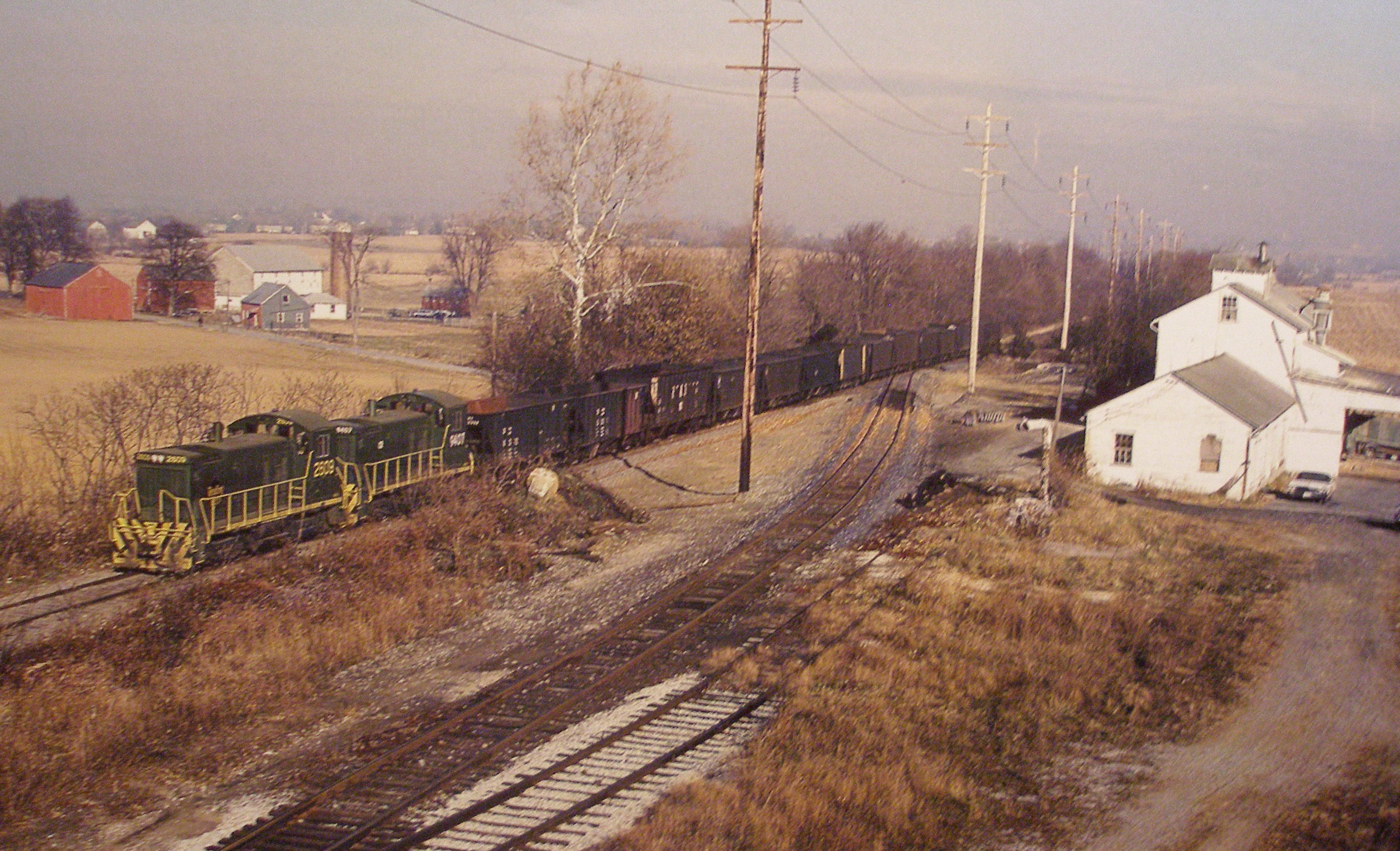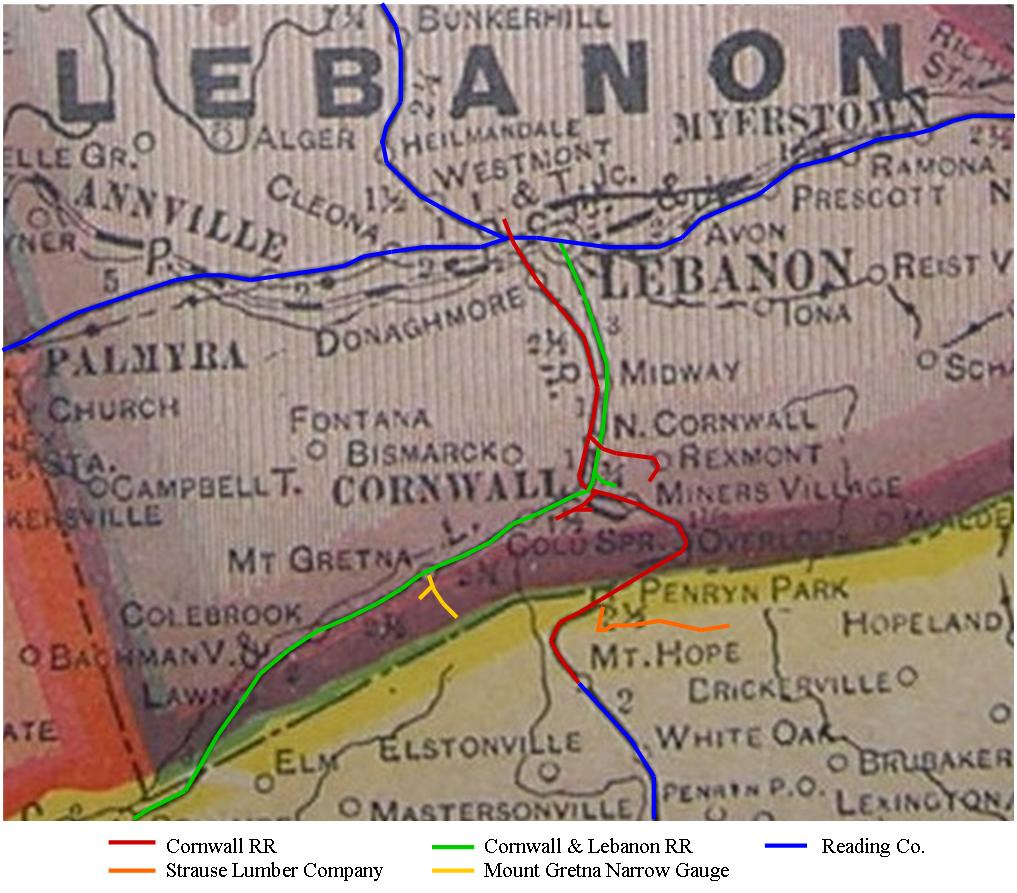
Map showing the Cornwall RR (in red) and its connecting lines.

Ever since Peter Grubb found ore in what became Cornwall, Pennsylvania in the 1730's and built the first furnace, there was a need to transport iron products. At the time, roads were nearly all dirt and the density of iron made it even more difficutlt to transport. Even with wagon wheels that were six inches wide, weather conditions would make roads almost impassable. As a result, in 1848, a plank road, constructed of wooden boards laid edge to edge, was built to ease the process of shipping the iron to the Union Canal. It only took a couple more years to come to the next step of creating a railroad.
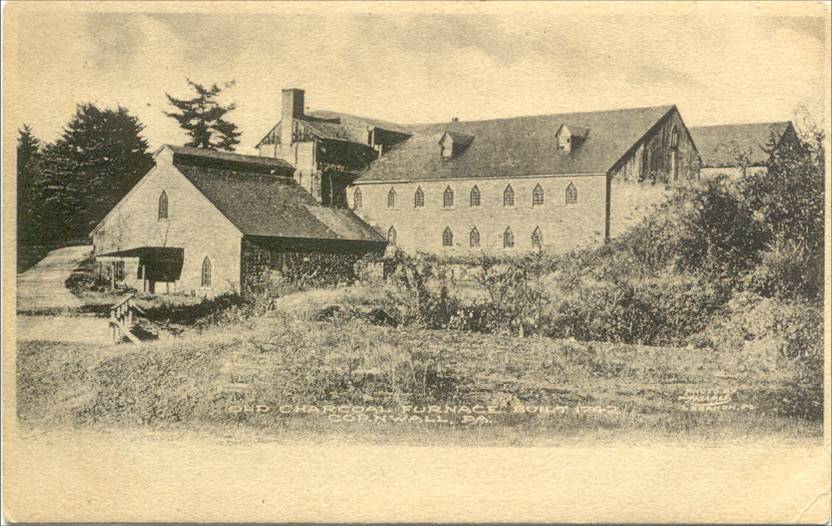
The first railroad to reach Cornwall was the North Lebanon Railroad. It was incorporated on May 25, 1850 by George Dawson Coleman and William Coleman and opened in 1855. The railroad extended for about six miles from the ore banks in Cornwall to the Union Canal in Lebanon City. Originally ore laden carts were pulled by teams of mules. This type of operation only lasted seven months until a locomotive was purchased, capable of pulling the same weight that would have taken a team of one hundred mules. In 1857 the Lebanon Valley Railroad reached Lebanon and built an interchange with the North Lebanon RR (the Lebanon Valley RR quickly became part of the Philadelphia & Reading RR). In 1870, the North Lebanon Railroad's name was changed to the Cornwall Railroad.
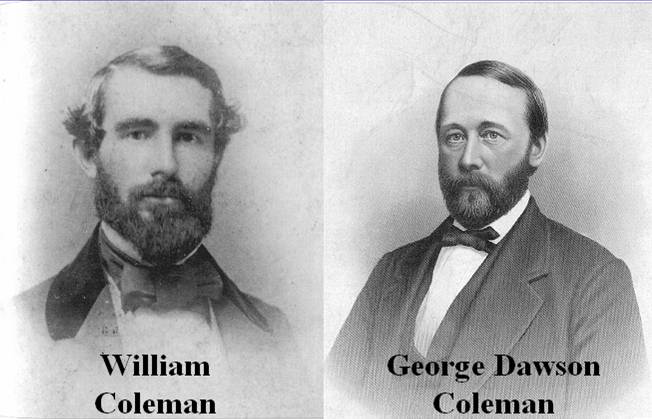
In 1865, a second rail line was constructed in Cornwall. Referred to as the Spiral Railroad, this line was constructed by the Cornwall Ore Banks Company to ease the mining of the three ore bearing hills by loading the ore directly into North Lebanon Railroad cars. Later on, the Cornwall Ore Banks used rail lines constructed in a series of switchbacks to ease the mining of the open pit, just south of middle hill. This operation lasted until the mid-1940’s when the grade for the rail line finally became too steep and the operation was taken over by trucks.
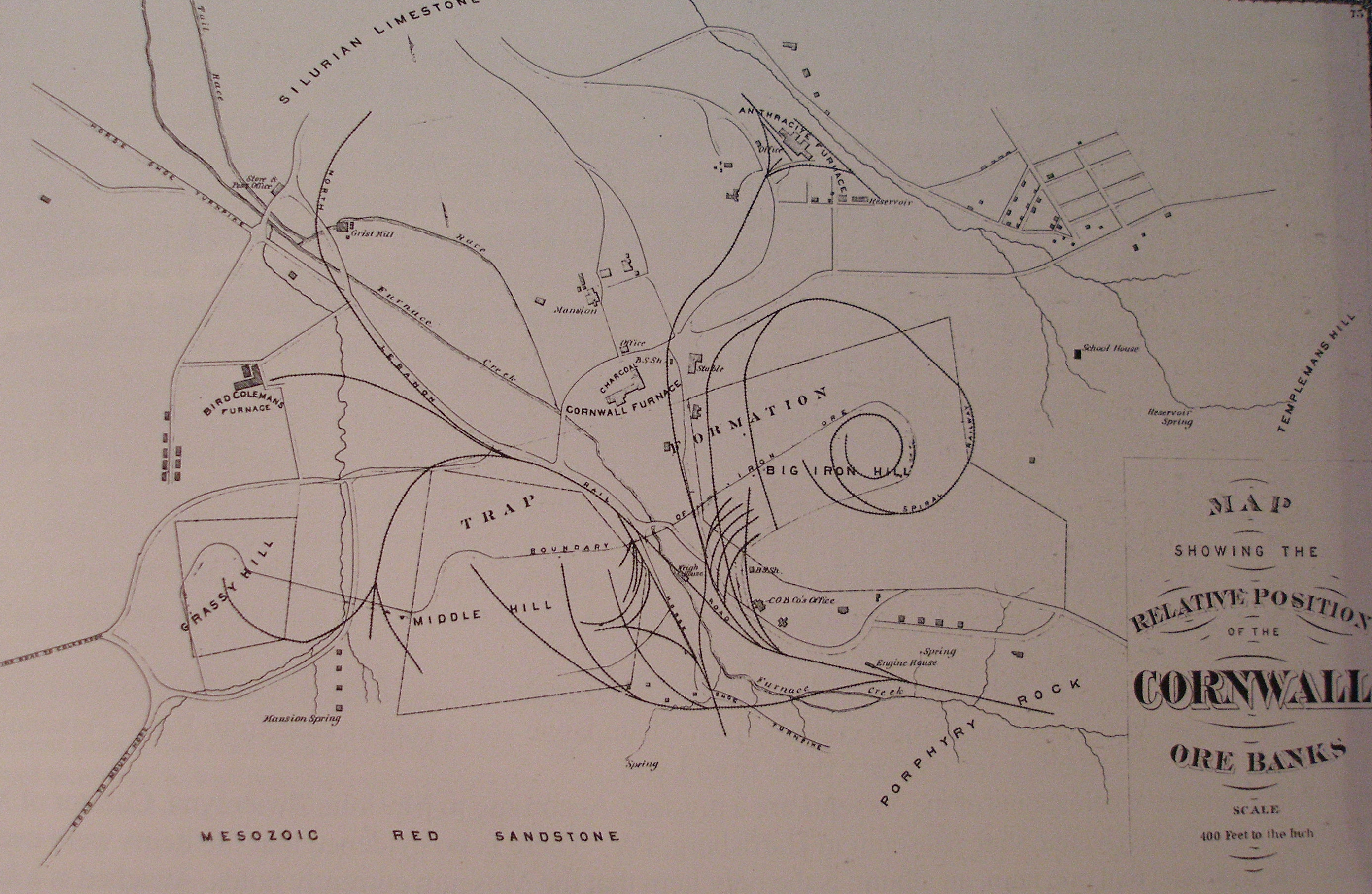
In the early years the Cornwall Railroad had virtually no competition but in 1883 all that would change. In that year, the Cornwall & Lebanon Railroad (C&L) opened. Robert Habersham Coleman incorporated this line, directly competing with the Cornwall Railroad for access to the ore mines. He owned a portion of the local mining and furnaces and wanted to expand into the railroad buiness too. Interestingly enough, Robert H. Coleman was the cousin to the then president of the Cornwall Railroad, William Freeman, and was the son of the North Lebanon Railroad (now Cornwall RR) founder, William Coleman.
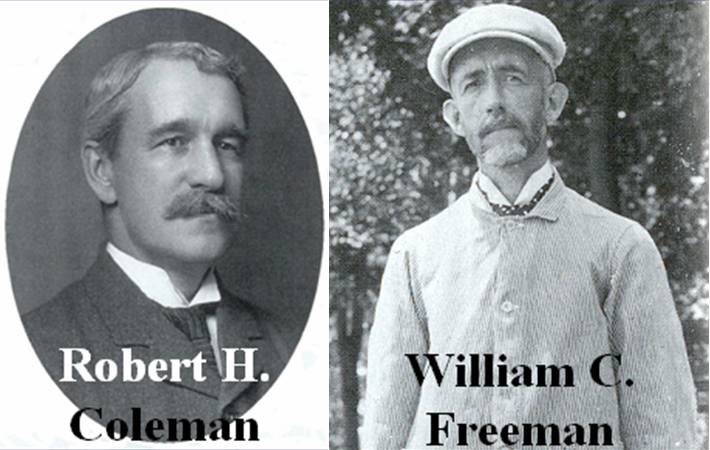
The two lines quite simply did not get along with each other thus creating an intense rivalry between them. Several lawsuits between the lines were filed over rights to the mines and at one point the C&L’s branch line to the mines were torn up by men under the command of Freeman. Originally the Cornwall & Lebanon had a level crossing over the Cornwall Railroad’s line in Cornwall in order reach Mount Gretna and Conewago. However, there were arguments over who would protect the level crossing (to prevent a collision), and as a result of the disagreement, a large fill and iron bridge were constructed to carry the C&L line directly overtop of the Cornwall’s. Both lines retained high standards for their appearance resulting in very well kept equipment and locomotives. Each line even had their own parks to generate more passenger service. On the C&L there was Mount Gretna and the Cornwall Railroad had Penryn Park. The rivalry even took part in the form of train races from Cornwall to Lebanon. James Kercher describes it best in his book “Cornwall R.R.:”
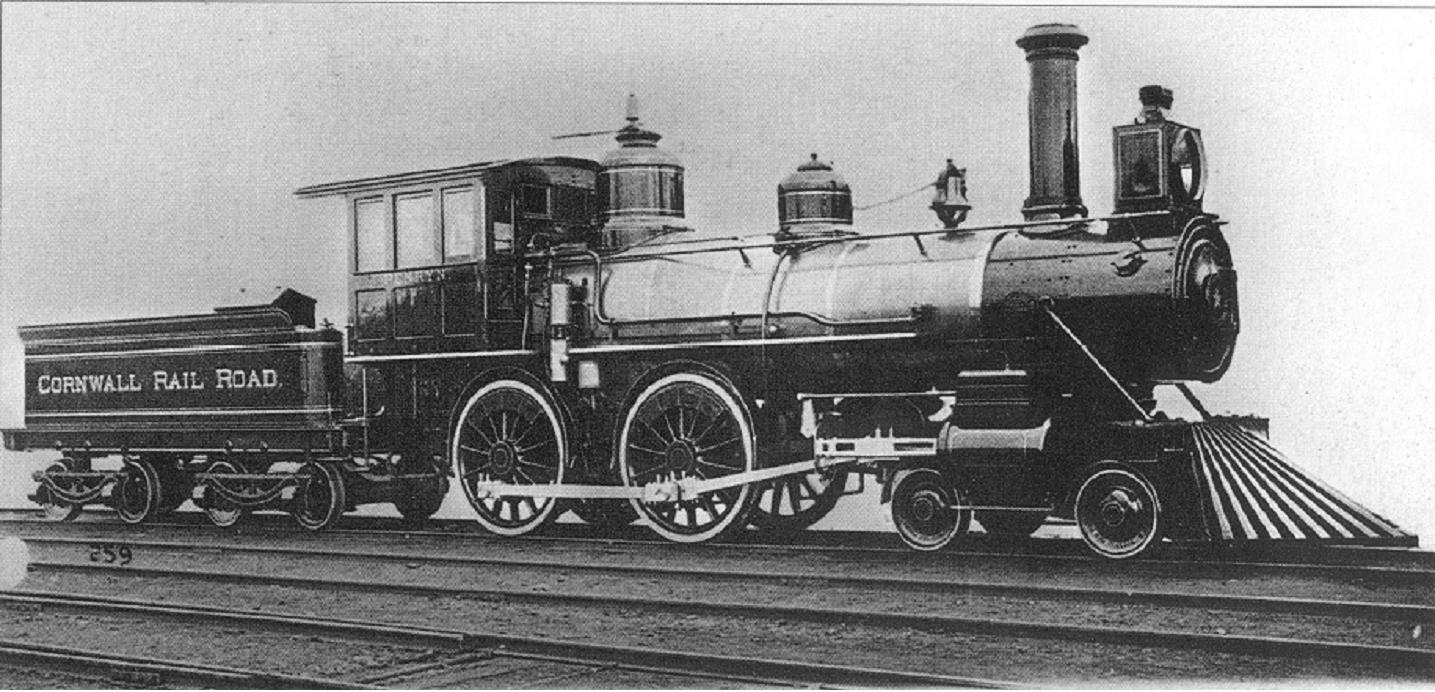
“Often the passenger trains of the Cornwall Railroad and the Cornwall & Lebanon Railroad would race each other from Cornwall to Lebanon. One train would sometimes delay its schedule to wait for the other – and then the race was on! This must have been a great thrill for the more hardy passengers. I have been told that Mr. Robert Coleman himself took over the engineer’s job on a few occasions in order to race.
From their Cornwall Stations to the 12th & Walnut Street crossing the tracks paralleled each other on a level grade for almost five miles and made an excellent race track. Some of the oldtimers tell me that often the “Corny” (Cornwall Railroad) would not be able to stop at the Donaghmore station. It would skid to a screeching stop several hundred feet away and then back up to the station.”
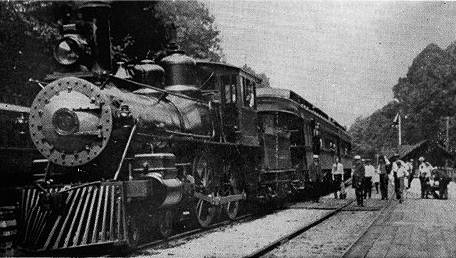
In 1884, the Cornwall & Mount Hope Railroad was opened to traffic between its two namesake towns. In Cornwall it tied in with the Cornwall Railroad and in Mount Hope, Lancaster County, it interchanged with the Reading & Columbia branch of the Philidelphia & Reading RR (P&R). This line was owned by the Cornwall Railroad and was absorbed into it two years later. With this addition, the Cornwall's mainline reached its full length of 11.8 miles. Although its secondary trackage and sidings varied greatly over the years, the Cornwall Railroad's mainline often counted for only half or less of the total trackage owned by the company. The Cornwall did have some trackage rights over the Reading & Columbia branch into Manhiem and at one time all the way into Lititiz. This was done as part of an aggrement between the P&R and the Cornwall known as the Lancaster-Lebanon Joint Line, which allowed either company to use the other's tracks to streamline passenger service. This meant that the Cornwall often ran passenger trains into Manhiem and the P&R would run its trains accross the Cornwall RR.

Robert H. Coleman at his height in the 1880’s had roughly thirty million dollars; however, after he over-invested in a railroad scheme in Florida, he lost the Cornwall & Lebanon Railroad to his debtors. In 1913, the Pennsylvania Railroad began to acquire stock of the Cornwall & Lebanon Railroad and completed their purchase of it on Aril 15, 1918. Finally in 1972, the line was abandoned by Penn Central after being severally damaged by Hurricane Agnes. There was simply not enough revenue to justify repairing the line.
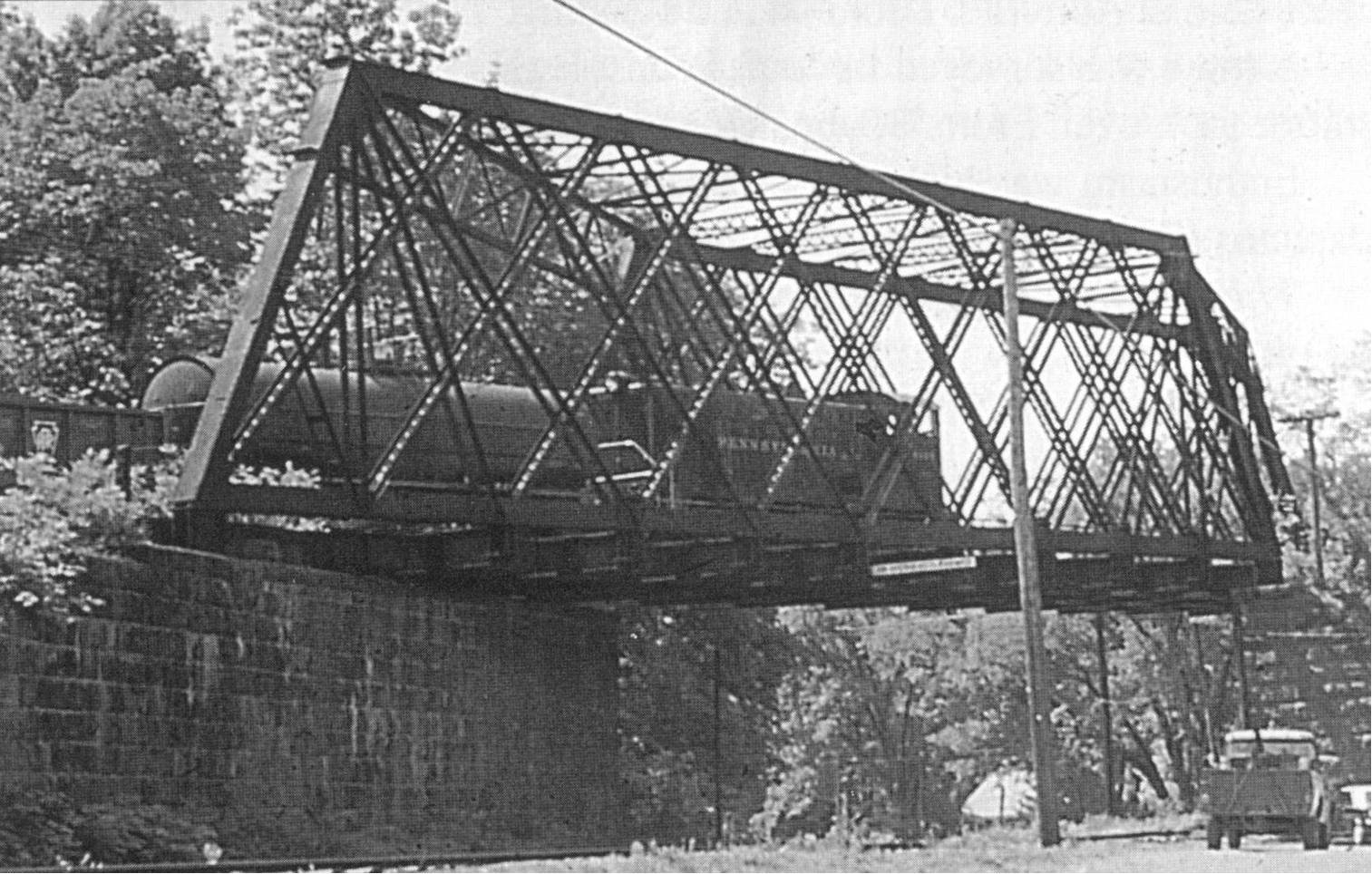
The Cornwall Railroad remained a very prosperous line well up through the 1950’s and into the early 1960’s. In just the year of 1949 alone, the railroad hauled 1,448,000 tons of iron ore, significantly more than the annual revenue of 51,068 tons in the 1850’s. In 1950, the line replaced its fleet of steamers with much more efficient diesel-electric locomotives. However, in 1962 Bethlehem Steel created a new concentrator plant in Rexmont. For many years prior to this, raw ore was shipped up to Lebanon to be processed there at the original concentrator. The reduction in revenue due to shipping only processed ore devastated the Cornwall Railroad. It was only two years later on October 15, 1964 that the Reading Company began leasing and operating the ailing Cornwall. In 1968, the Reading outright bought the Cornwall.
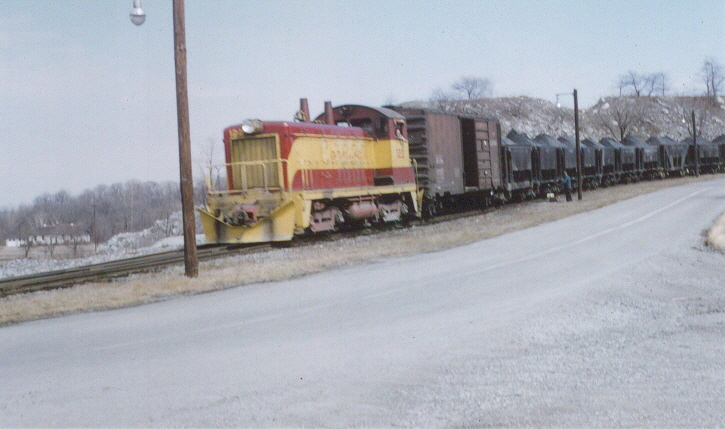
In 1972, Hurricane Agnes stalled over central Pennsylvania and flooded the ore mines. After over 230 years of mining there was simply not enough ore to justify draining the mine shafts to recover what little was remaining. The open pit mining was continued until 1973 having been drained after Agnes. A year or so following the closure of the mines, the concentrator was reopened. For approximately one more year, Bethlehem Steel shipped foreign ore in to the Rexmont concentrator to be processed and then shipped out, again by rail. After it closed for the second time, there was no longer a need for a rail line into Cornwall, thus ending Cornwall’s railroading history. Some trackage was still used for another two decades that truncated north of Cornwall. This remaining track served Alcoa near Midway, a feed mill, the Lebanon Daily News, and one or two other industries before Conrail abandoned it circa 1996. Today there is approximately several hundred feet of servicible track in Lebanon City that Norfolk Southern utilizes, which once belonged to the Cornwall Railroad.
